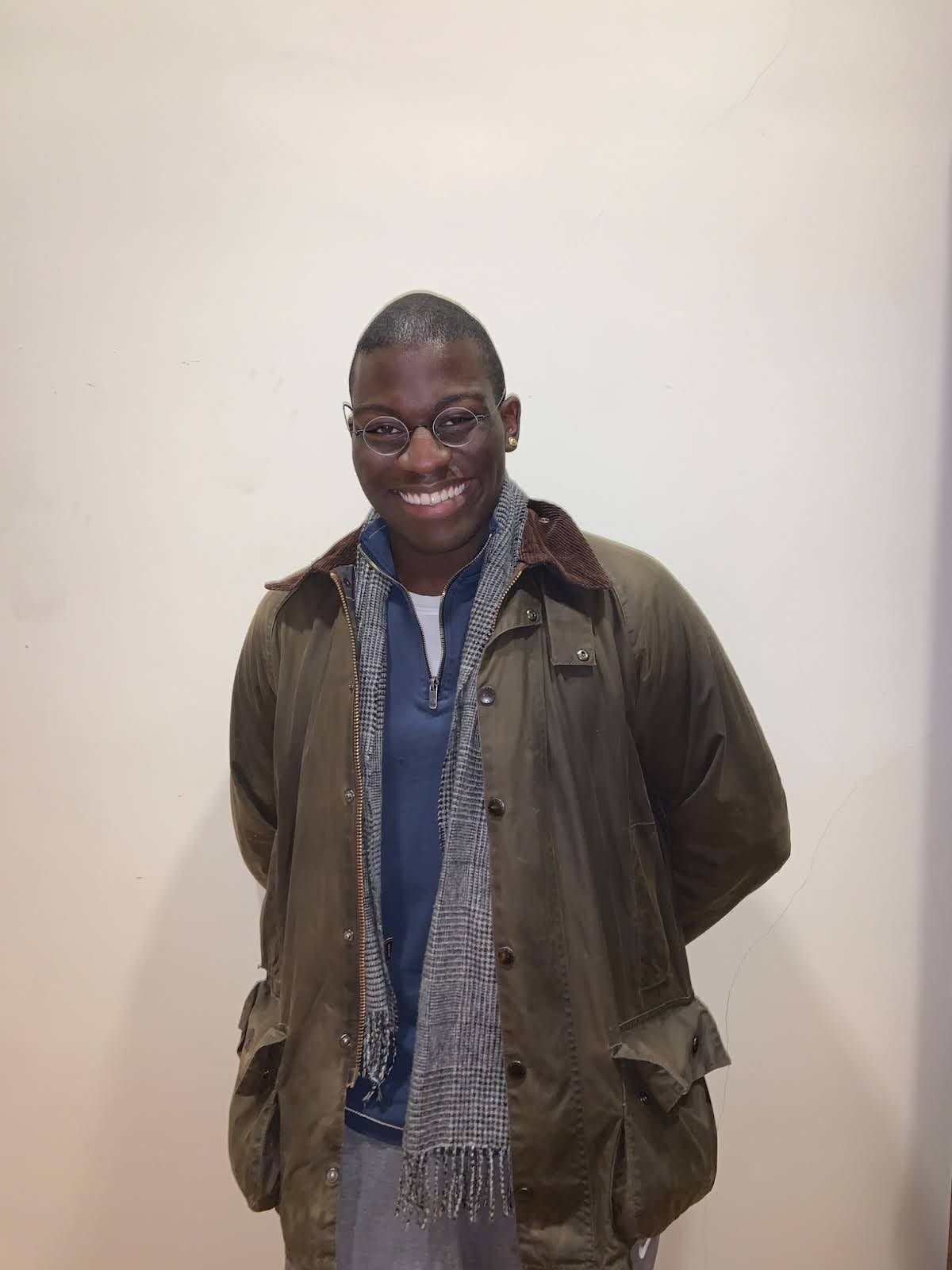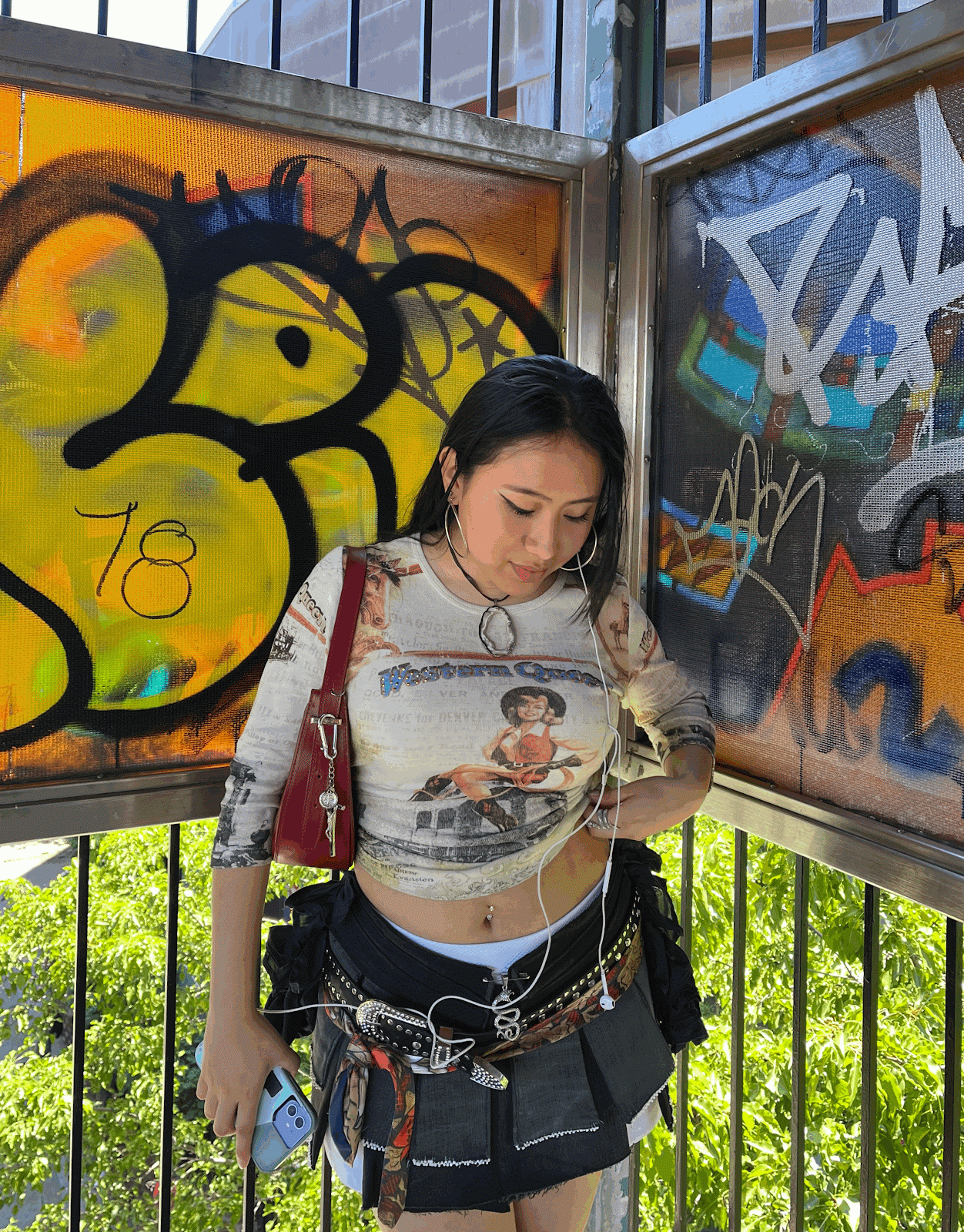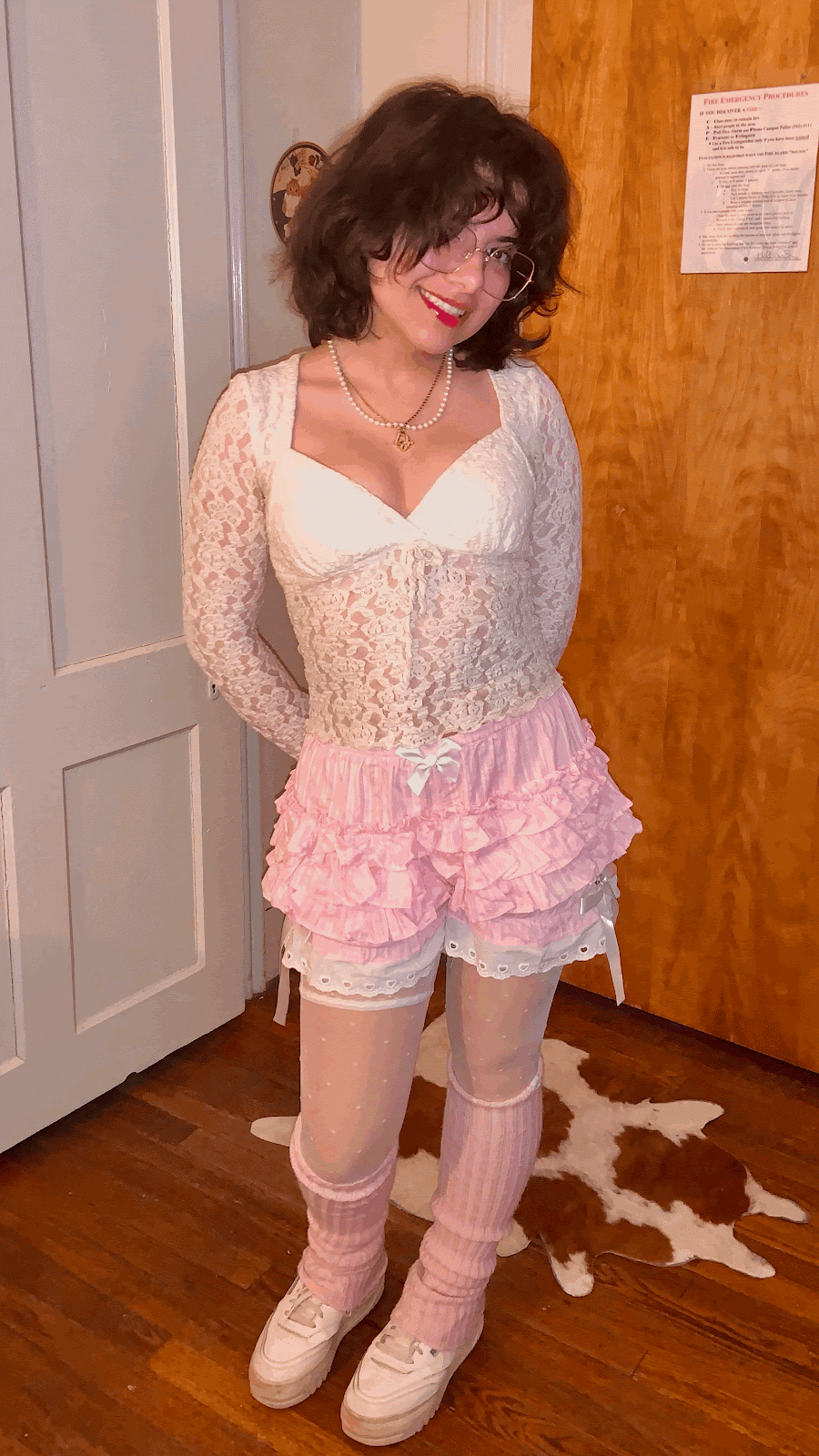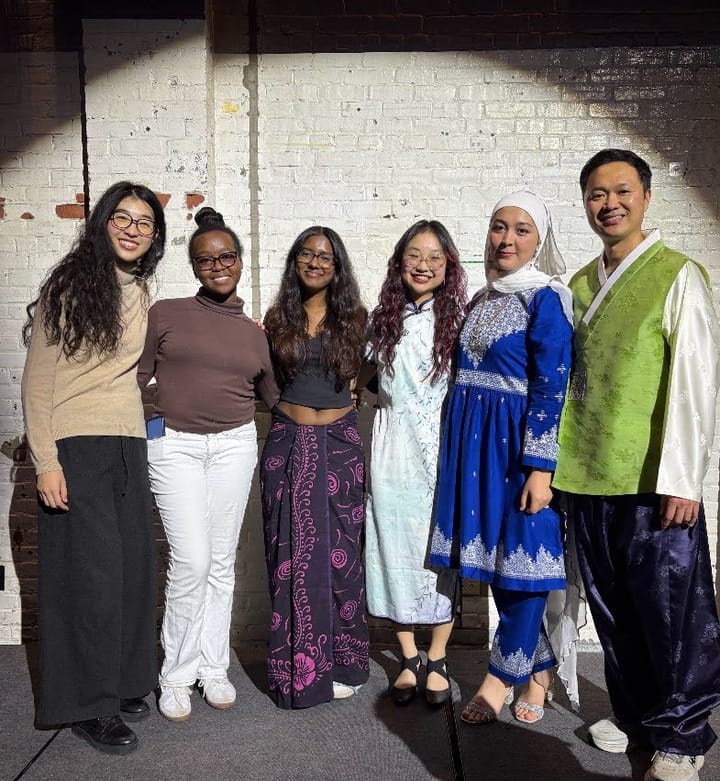Woolly Fashion: Arianna Dempsey, Melani Garcia, Jaden Richards, and Robyn Valverde
Tiia McKinney ’25 interviews four students to highlight how Woolly Fashion is a fluid form of self-expression, enabling students to communicate their identities and moods beyond trends and price.

Coming from a Caribbean household, I have always been concerned about what I wore to “look presentable” whenever I left my home. While wearing “presentable” clothes did not necessarily make me fashionable, it helped me develop an appreciation for details and patterns. At Amherst, students come from different backgrounds and embrace fashion in different ways. Regardless of how people express themselves, fashion doesn’t have to be extravagant to be significant to each individual.
To explore how students express themselves on Amherst’s campus and in the world at large, I interviewed four students across various class years and gender expressions about what fashion means to them. I was first struck by the simple yet classic style of Jaden Richards ʼ25 and his focus on cozy, classy outfits during the winter: comfortable sweaters that he can pair with sweatpants or dress pants, and patterned scarves that act as statement pieces. While Richards likes to dress sophisticatedly, he does so with a smaller closet. He explained that much of his wardrobe consists of clothes he has at home, pieces he has been gifted, or items he has thrifted. Having fewer items allows him to appreciate what he has more deeply, which encourages him to be more artistic in pairing and restyling pieces.
Melani Garcia ʼ25, like Richards, said that she appreciates how one item can be worn and repurposed to fit different outfits. A seamstress, she enjoys finding her clothes at thrift stores rather than adding to the pile of environmentally-damaging fast fashion items. Beyond the day’s weather and her mood, her style is heavily influenced by her urban aesthetic and Latinx heritage. While fashion is a way for Garcia to connect with her heritage, it is also a way for her to reclaim power as a woman, a theme that extends into her academic work. In fact, Garcia studies how Latinx women express themselves through their clothing despite societal challenges such as catcalling and other forms of street harassment in her art and fashion thesis. She explained that her thesis aims to “change the narrative and to show that men are not going to dictate what [women] wear.” During our interview, Garica wore a long-sleeved graphic cropped shirt and a pleated skirt adorned with a chunky belt. While Garcia likes to dress femininely, she explains that she often wears masculine clothing to feel safe while navigating the city.

Similarly, Robyn Valverde ʼ26E considers clothing a way to express who they are and how they feel as their gender identity fluctuates. Their outfits range from chunky looks they associate with masculinity to softer, more feminine florals and pinks. When their gender identity feels more neutral, they prefer to integrate components from both styles for what they describe as a “balanced” aesthetic. No matter how they are feeling, fashion is their way of expressing themselves. Valverde explained, “I’m not much of an artist, but [dress]feels like a natural medium of artistic exploration and expression.”

Arianna Dempsey ʼ27 shared a similar perspective, describing fashion as an “outlet.” She believes there is no single correct way to dress; instead, the concept of fashion itself is about exploration. Dempsey refers to herself as a “style shapeshifter,” and has recently shifted her wardrobe toward an oversized, “baggy chic” aesthetic that prioritizes comfort. While adjusting the fit of her clothing, however, Dempsey has stayed true to her interest in colors, which she views as allowing her to make bold statements.

Apart from understanding how fashion influences these four students’ lives, I was curious about how much of their fashion choices are influenced by outsiders’ perspectives. For many, their fashion is motivated by their mood but also shaped, in part, by how they wish to be perceived. Many students select clothing that accentuates aspects of their personality, gender identity, or overall character. However, as Richards explained perfectly, “wearing athleisure doesn’t make someone athletic, and wearing camouflage doesn’t make someone a soldier.” In other words, you are not defined by what you wear. Everyone should have the freedom to experiment, to feel something unique each day, and to dress according to their desire to articulate their individuality. Fashion is fluid — style is allowed to change, and clothes are a distinctive form of self-expression, enabling a wonderfully unspoken communication of identity.





Comments ()